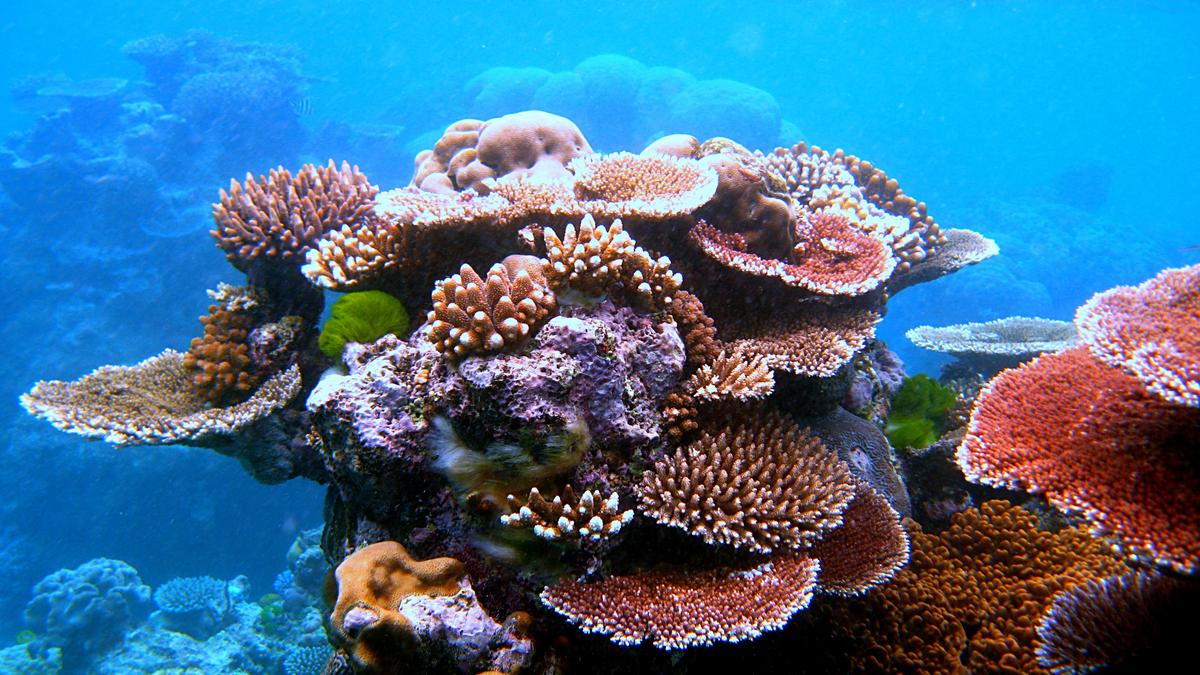Coral Larvae Cryobank

- 09 Oct 2025
In News:
In a significant step toward marine conservation, the Philippines has established Southeast Asia’s first coral larvae cryobank, aimed at safeguarding coral genetic diversity and restoring threatened reef ecosystems. The initiative marks a pioneering regional collaboration among research institutions in the Philippines, Taiwan, Indonesia, Malaysia, and Thailand.
About the Coral Cryobank Initiative
- The Coral Larvae Cryobank is designed to freeze and store coral larvae at ultra-low temperatures, thereby preserving their genetic material for future reef restoration.
- It is part of a regional conservation programme supported by the Coral Research & Development Accelerator Platform, with technical guidance from Dr. Chiahsin Lin and the University of the Philippines Marine Science Institute.
- The cryobank acts as a “genetic insurance policy” to protect coral biodiversity in the face of rising ocean temperatures, pollution, and habitat destruction.
Cryopreservation: The Science Behind It
Cryopreservation is a process of preserving living cells or tissues at –196°C using liquid nitrogen, which halts all biological activity.
- Cryoprotectant solutions (such as glycerol, DMSO, and ethylene glycol) are used to prevent ice crystal formation that can damage cells.
- The process of vitrification converts the larvae into a glass-like state, allowing them to remain intact indefinitely.
- Laser-assisted thawing enables rapid revival of viable coral larvae, which can later be used for reef restoration and rehabilitation.
This technique ensures that coral genetic material remains preserved even if wild populations are damaged by bleaching events or ocean warming.
The Coral Triangle: The ‘Amazon of the Seas’
- The Coral Triangle, often termed the “Amazon of the Seas”, spans about 6 million sq. km across Indonesia, Malaysia, Papua New Guinea, the Philippines, Solomon Islands, and Timor-Leste.
- It covers two major biogeographic regions — the Indonesian–Philippines Region and the Far Southwestern Pacific Region — and represents the richest marine biodiversity hotspot on Earth.
Key Features
- Home to over 75% of global coral species and one-third of all reef fish.
- Supports six of the world’s seven marine turtle species.
- Sustains the livelihoods and food security of over 120 million people.
- Hosts vast mangrove forests and seagrass ecosystems, critical for carbon sequestration and coastal protection.
Threats to Coral Ecosystems
The Coral Triangle faces escalating threats due to climate change and anthropogenic pressures.
- Rising sea temperatures trigger coral bleaching, where corals expel symbiotic algae (zooxanthellae), turning white and losing energy sources.
- The Status of Coral Reefs of the World 2020 report found that 14% of the world’s corals were lost between 2009 and 2018.
- Projections indicate that 70–90% of live corals could vanish by 2050 without effective conservation.
- Destructive fishing, coastal pollution, and unregulated tourism further degrade reef habitats.
Understanding Corals
- Corals are marine invertebrates belonging to the Cnidaria phylum.
- They consist of tiny organisms called polyps, which secrete calcium carbonate skeletons that form coral reefs.
- The color of corals arises from symbiotic algae within their tissues, essential for nutrient exchange.
- Types of coral reefs:
- Fringing reefs – develop along shorelines
- Barrier reefs – found in open water separated from land by lagoons
- Atolls – circular reefs surrounding submerged volcanoes
- Coral reefs act as nurseries for one-fourth of all marine life, providing food, shelter, and breeding grounds.
Significance of Coral Cryobanking
The cryobank serves as a long-term safeguard for coral biodiversity by ensuring viable genetic material remains preserved even in the event of large-scale reef degradation.
Key benefits include:
- Conservation of genetic diversity for future breeding and research.
- Restoration of degraded reefs through reintroduction of cryopreserved larvae.
- Strengthening regional resilience against climate-induced coral loss.
- Promotion of scientific cooperation across Southeast Asian nations.
